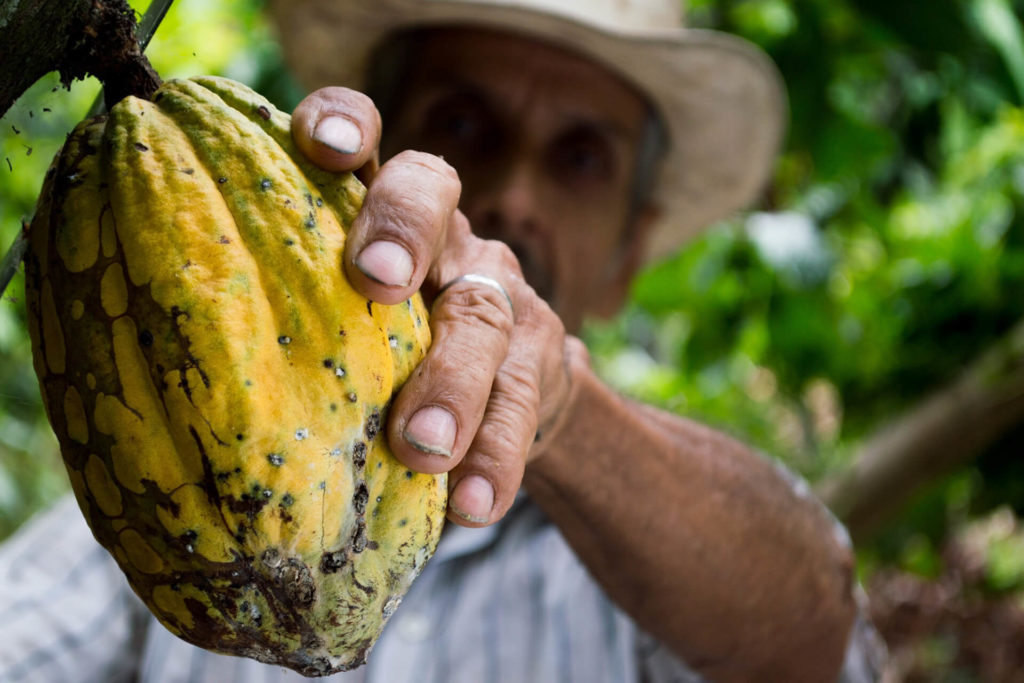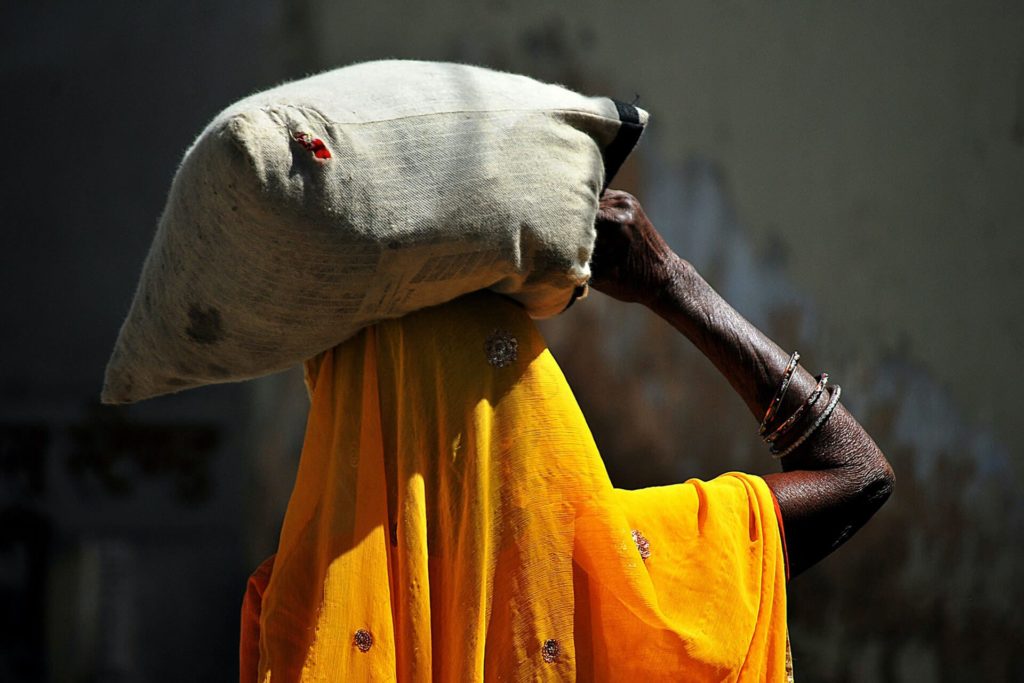Food Sovereignty for the Future of Farming
The term ‘food sovereignty’ is spreading, and embodies a transformation of our current food system. The concept resonates with our instinctive desire for autonomy over what we consume, but what exactly does it mean and how can it address the crucial challenges we face today?
To build a picture, let us first look at the evolution of modern agriculture. Humanity’s transition from hunter gathering to the establishment of towns and cities is attributed to agriculture, and for most of human history we lived this way – in proximity to nature, eating organic, local produce. It was only in the 1960s with the so-called Green Revolution that multinational corporations began to play a role in the food system, arguing that the globalized free market of food exportation would eliminate food shortages and create wealth. Although the Green Revolution is credited for an exponential growth in food production in the second half of the twentieth century, the environmental impacts of industrial agriculture – with its dependence on mechanization, chemical inputs, and genetically modified seeds – began to be questioned by ecologists and agronomists for its impact on soil fertility and biodiversity.
However, the Green Revolution impacted far more than soil health. From the displacement of indigenous people for the expansion of monoculture, to the extinction of heirloom seeds due to genetic modification, industrial agriculture is left with few supporting arguments. Observing the range of impacts of modern agriculture on society and culture, the Via Campesina – a global movement of farmers advocating for a fairer future of food since 1993 – coined the term ‘food sovereignty’ in 1996 as “the right of peoples to healthy and culturally appropriate food produced through ecologically sound and sustainable methods, and their right to define their own food and agriculture systems.” Food sovereignty is a call-to-action and a framework of values to guide a holistic reconceptualization of our food system.
The concept of food sovereignty was consolidated with the Declaration of Nyéléni in 2007, following a forum held in Mali by the Via Campesina, family farmers, indigenous peoples, landless rural workers, pastoralists, fisherfolk, and numerous NGOs advocating for food system transformation. The Declaration established six actions of food sovereignty: focuses on food for people, values food providers, localizes food systems, puts control locally, builds knowledge and skills, and works with nature.

Food for people
Food security is typically measured using the Food and Agriculture Organization of the United Nations (FAO)’s definition: “Food security exists when all people, at all times, have physical and economic access to sufficient, safe and nutritious food that meets their dietary needs and food preferences for an active and healthy life”. While the FAO’s definition focuses on access to sufficient caloric intake for human well-being, Via Campesina highlights that this definition does not distinguish where the food comes from, the conditions under which it is produced, or the social and environmental impacts it may have. Food sovereignty on the other hand advocates for supporting local production and empowering producers as an alternative to food aid and subsidies that support agribusiness corporations.
Valuing food providers
Farmers – regardless of their country – carry out one of the most important tasks for society. Despite navigating the unpredictability of the seasons and the economy, they often receive little reward – according to the World Bank, 65% of poor working adults made a living through agriculture. For this reason, one of food sovereignty’s priorities is to “value and support the contributions, and respect the rights of women and men, peasants and small-scale family farmers, pastoralists, artisanal fisherfolk, forest dwellers, indigenous peoples and agricultural and fisheries workers, including migrants, who cultivate, grow, harvest and process food; and rejects those policies, actions and programs that undervalue them, threaten their livelihoods and eliminate them.” Inclusivity is a cornerstone of food sovereignty’s framework.
Whilst seeds and chemical inputs are also connected with the sixth pillar of working with nature, as part of its concern for food producers, the framework of food sovereignty opposes the use of genetically modified organisms (GMOs), and of chemical fertilizers and pesticides, due to the economic costs for farmers, and the long-term health impacts of handling these products. One key example of the potential impacts of GMOs on farmers’ wellbeing is the case of Percy Schmeiser vs Monsanto: In 1998 smallscale Canadian farmer Percy Schmeiser was sued by Monsanto for growing their genetically modified canola. Farmers traditionally save seeds to replant from year to year, but in the case of GMOs, farmers must pay Monsanto yearly for rights to plant the seed. Schmeiser was found to be growing Monsanto’s canola without a license, although he claimed that the seed had spread onto his land from neighboring fields. The case gained international attention, and was brought to the Supreme Court, where Schmeiser lost the case 5-4. According to Reuters, Monsanto has sued hundreds of farmers across the world for using their patented seeds, putting their livelihoods at risk. For this reason, the Declaration of Nyéleni proposes to “ensure that the rights to use and manage our lands, territories, waters, seeds, livestock, and biodiversity are in the hands of those who produce food.”

Localizing food systems
With this belief in mind, the third and fourth pillars of food sovereignty focus on fulfilling people’s food needs through local production. Not only are local food chains more environmentally friendly due to reduced transportation and refrigeration, but they also generate income in rural areas and build a connection between producers and consumers. According to the FAO, community-supported agriculture schemes (CSA) have flourished across the world in recent years, showing a growing consumer interest in local produce. CSA takes numerous forms, such as the distribution of fresh produce directly from farms to local consumers, or programs where subscribers regularly visit a nearby farm and participate in the harvesting process. This is the case with the organic farm Stadtbauernhof Saarbrücken in Germany – participating in the EU-funded project AGROMIX on regenerative farming – where subscribers meet weekly to sow, tend to and harvest the farm’s crops. According to the Stadtbauernhof managers, public interest in schemes like this has increased during the COVID-19 pandemic, as the unpredictability of international food chains becomes visible.
The World Trade Organization envisaged a world where all agricultural goods would be produced and traded according to where the production costs are lowest.
Building knowledge and skills
According to the FAO, 80% of global food supply is produced by family farmers, who typically store their most productive seeds from year to year, using the varieties most adapted to their region and climate. However, as more farmers adopt GMO seeds and industrial practices, many heirloom varieties and farming techniques have been lost. Indigenous communities across the world hold the knowledge for recovering agrobiodiversity, but these groups are rarely given a voice. For this reason, the fifth pillar of food sovereignty focuses on conserving local knowledge, and establishing networks to pass on these skills to future generations of farmers.
While indigenous groups lack the fora to spread their knowledge, many grassroots organizations are emerging to spread awareness amongst consumers about the origin of the food they consume. For example, the Spanish cooperative Eixarcolant carries out workshops, guided walks, and seed exchange events to encourage local farmers to prioritize heirloom varieties, and to encourage consumers to support those who prioritize agrobiodiversity.

Working with nature
The final pillar of the food sovereignty framework is about reducing the environmental impacts of food production. According to the FAO, agriculture is responsible for more than one third of global greenhouse gas emissions, and to reach the 2015 Paris Agreement objective of limiting global warning to 1.5°C, changes must be made. Implementing the agroecological practices within the framework of food sovereignty would significantly reduce the current environmental impact of food production. For example, deforestation is currently responsible for 11% of human greenhouse gas emissions, roughly 90% of which takes place for the expansion of large-scale crop production and livestock management. Meanwhile, the local, small-scale, and agrobiodiverse practices of agroecology bypass mass deforestation and the costs of international food exports. Furthermore, it is increasingly clear that the application of chemical pesticides and fertilizers are damaging soil fertility, putting the future of food production at risk. Countering this, food sovereignty advocates for organic production to regenerate agricultural soils. Whether we can feed a growing population using organic methods is a core debate, but according to the FAO, fields that have received chemical inputs for decades would need a carefully planned transition to maintain yields, while areas with low current external inputs have the potential to increase yields under well-managed organic methods, boosting the argument for using organic methods to pursue food security.
Sustainable food production is a defining trait of the zeitgeist of the twenty-first century, gaining the attention of public, private, and non-profit actors, and receiving attention on platforms ranging from Expo 2020 to Netflix in its trending documentary Kiss the Ground. From 2014-2020 the EU’s Horizon 2020 Program – the largest public funding scheme in Europe – invested 3.7 billion euros in research and innovation for societal challenges, at least 50% of which was invested in agriculture and forestry, showing the increasing interest in the topic. This is just the beginning, and now is the time to integrate food sovereignty into the movement. We are now in the final decade of working towards the United Nations Sustainable Development Goals, and at the time of evaluating our progress towards SDG 2 (Zero Hunger), this movement is an invitation to shift our focus from food security to food sovereignty.